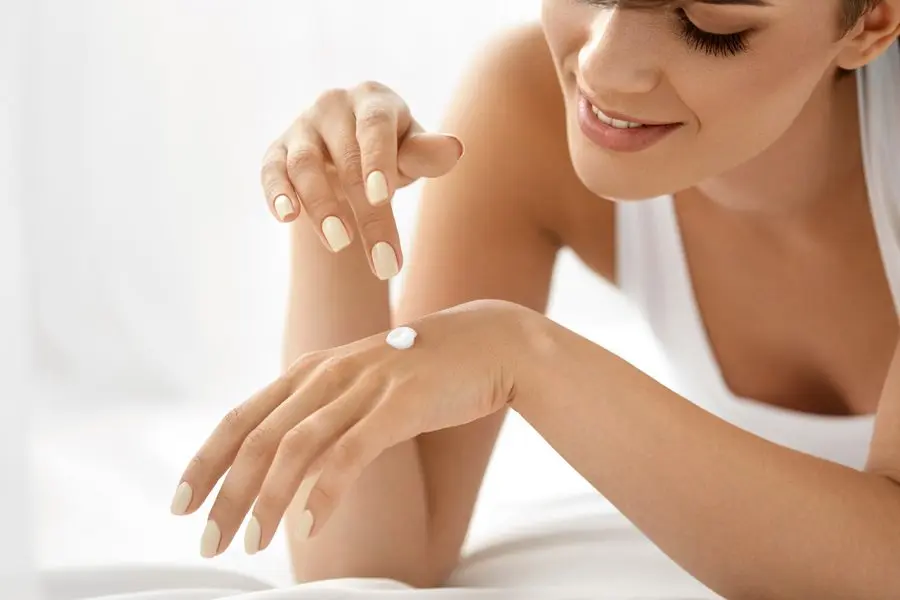
How does sunscreen actually work?
Contents:
Everyone knows that using sunscreen daily is a great way to protect your skin from harmful UV rays. We diligently apply a broad spectrum SPF every morning—and reapply every two hours throughout the day—to prevent sunburn. This practice can help reduce your chances of visible signs of skin aging. But in between those daily uses, have you ever wondered how sunscreen is protecting your skin? After all, sunscreen is an essential part of any skin care routine. We should at least be aware of how the product works, right? To that end, we provide answers to your other burning questions about sunscreen!
HOW DOES SUN CREAM WORK?
Unsurprisingly, the answer has a lot to do with the composition of these foods. Simply put, sunscreen works by combining organic and inorganic active ingredients that are designed to protect your skin. Physical sunscreens are usually made up of inorganic active ingredients, such as zinc oxide or titanium oxide, that sit on the surface of your skin and help reflect or scatter radiation. Chemical sunscreens are typically made up of organic active ingredients such as octocrylene or avobenzone that help absorb UV radiation at the surface of the skin, convert the absorbed UV rays into heat, and then release heat from the skin. There are also some sunscreens that are classified as physical and chemical sunscreens based on their composition. When choosing a sunscreen, look for a formula that is waterproof and offers broad spectrum protection, meaning it protects against both UVA and UVB rays.
To learn more about the difference between physical and chemical sunscreens, read this!
WHAT IS THE DIFFERENCE BETWEEN UVA AND UVB RAYS?
By now, you probably know that both UVA and UVB rays are harmful. The key difference between the two is that UVA rays, which are not fully absorbed by ozone, tend to penetrate deeper into the skin than UVB rays and can prematurely age your skin's appearance, contributing to noticeable wrinkles and age spots. UVB rays, which are partially blocked by the ozone layer, are primarily responsible for sunburn delay and burns.
Did you know that there is a third type of radiation called UV rays? Since UV rays are completely filtered by the atmosphere and do not reach the Earth's surface, they are often not as widely discussed.
WHAT IS SPF?
SPF, or sun protection factor, is a measure of a sunscreen's ability to prevent UVB rays from damaging the skin. For example, if unprotected skin starts to turn red after 20 minutes, using an SPF 15 sunscreen should theoretically prevent reddening for 15 times longer than unprotected skin, i.e. about five hours. However, it is important to note that SPF only measures UVB rays, which burn the skin, and not UVA rays, which are also harmful. To protect against both, use a broad-spectrum sunscreen and take other sun protection measures.
Editor's Note: There is no sunscreen that can completely block all UV rays. In addition to sunscreen, be sure to follow other safety precautions such as wearing protective clothing, seeking shade, and avoiding peak hours of sunshine.
DOES SUN CREAM COME OUT?
According to the Mayo Clinic, most sunscreens are designed to keep their original strength for up to three years. If your sunscreen doesn't have an expiration date, it's a good idea to write the purchase date on the bottle and throw it away after three years. This rule should always be followed, unless the sunscreen is stored incorrectly, which can shorten the shelf life of the formula. If so, it should be thrown away and replaced with a new product sooner. Pay attention to any obvious changes in the color or consistency of the sunscreen. If something seems suspicious, discard it in favor of another.
Editor's Note: Scan your sunscreen packaging for expiration dates, as most should include them. If you see it, use the expiration date on the bottle/tube as a guideline for how long the formula can be used before it stops working.
HOW MUCH SUN CREAM SHOULD I USE?
If a bottle of sunscreen lasts you for years, chances are you aren't applying the recommended amount. Typically, a good application of sunscreen is about one ounce—enough to fill a shot glass—to cover exposed body parts. Depending on your body size, this amount may fluctuate. Be sure to reapply the same amount of sunscreen at least every two hours. If you are going to swim, sweat profusely or towel dry, reapply immediately.
IS THERE A SAFE WAY TO TANN?
Despite what you may have heard, there is no safe way to sunbathe. Every time you are exposed to UV radiation - from the sun or through artificial sources such as tanning beds and sun lamps - you damage your skin. It may seem harmless at first, but as this damage builds up, it can cause premature skin aging and increase the risk of skin damage.
Leave a Reply